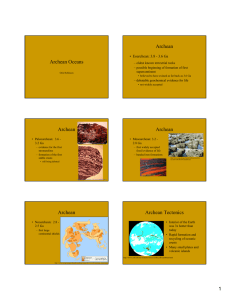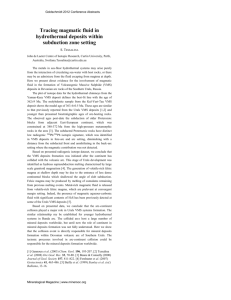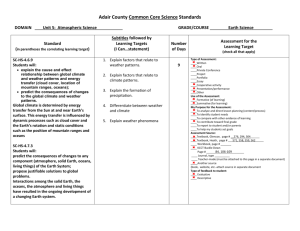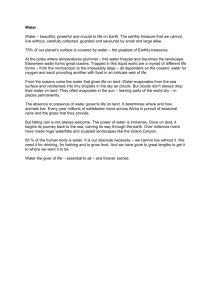Volcanogenic massive sulfide deposits host the evidence for sulfate
advertisement
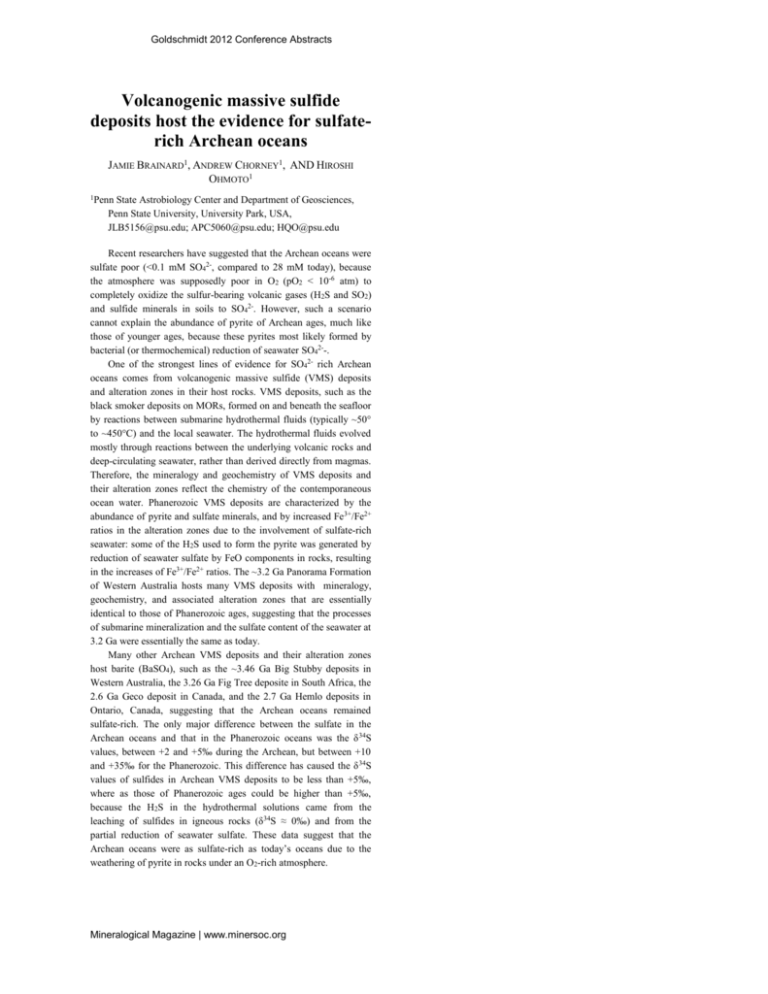
Goldschmidt 2012 Conference Abstracts Volcanogenic massive sulfide deposits host the evidence for sulfaterich Archean oceans JAMIE BRAINARD1, ANDREW CHORNEY1, AND HIROSHI OHMOTO1 1Penn State Astrobiology Center and Department of Geosciences, Penn State University, University Park, USA, JLB5156@psu.edu; APC5060@psu.edu; HQO@psu.edu Recent researchers have suggested that the Archean oceans were sulfate poor (<0.1 mM SO42-, compared to 28 mM today), because the atmosphere was supposedly poor in O2 (pO2 < 10-6 atm) to completely oxidize the sulfur-bearing volcanic gases (H2S and SO2) and sulfide minerals in soils to SO42-. However, such a scenario cannot explain the abundance of pyrite of Archean ages, much like those of younger ages, because these pyrites most likely formed by bacterial (or thermochemical) reduction of seawater SO42--. One of the strongest lines of evidence for SO42- rich Archean oceans comes from volcanogenic massive sulfide (VMS) deposits and alteration zones in their host rocks. VMS deposits, such as the black smoker deposits on MORs, formed on and beneath the seafloor by reactions between submarine hydrothermal fluids (typically ~50° to ~450°C) and the local seawater. The hydrothermal fluids evolved mostly through reactions between the underlying volcanic rocks and deep-circulating seawater, rather than derived directly from magmas. Therefore, the mineralogy and geochemistry of VMS deposits and their alteration zones reflect the chemistry of the contemporaneous ocean water. Phanerozoic VMS deposits are characterized by the abundance of pyrite and sulfate minerals, and by increased Fe3+/Fe2+ ratios in the alteration zones due to the involvement of sulfate-rich seawater: some of the H2S used to form the pyrite was generated by reduction of seawater sulfate by FeO components in rocks, resulting in the increases of Fe3+/Fe2+ ratios. The ~3.2 Ga Panorama Formation of Western Australia hosts many VMS deposits with mineralogy, geochemistry, and associated alteration zones that are essentially identical to those of Phanerozoic ages, suggesting that the processes of submarine mineralization and the sulfate content of the seawater at 3.2 Ga were essentially the same as today. Many other Archean VMS deposits and their alteration zones host barite (BaSO4), such as the ~3.46 Ga Big Stubby deposits in Western Australia, the 3.26 Ga Fig Tree deposite in South Africa, the 2.6 Ga Geco deposit in Canada, and the 2.7 Ga Hemlo deposits in Ontario, Canada, suggesting that the Archean oceans remained sulfate-rich. The only major difference between the sulfate in the Archean oceans and that in the Phanerozoic oceans was the δ 34S values, between +2 and +5‰ during the Archean, but between +10 and +35‰ for the Phanerozoic. This difference has caused the δ 34S values of sulfides in Archean VMS deposits to be less than +5‰, where as those of Phanerozoic ages could be higher than +5‰, because the H2S in the hydrothermal solutions came from the leaching of sulfides in igneous rocks (δ34S ≈ 0‰) and from the partial reduction of seawater sulfate. These data suggest that the Archean oceans were as sulfate-rich as today’s oceans due to the weathering of pyrite in rocks under an O2-rich atmosphere. Mineralogical Magazine | www.minersoc.org


